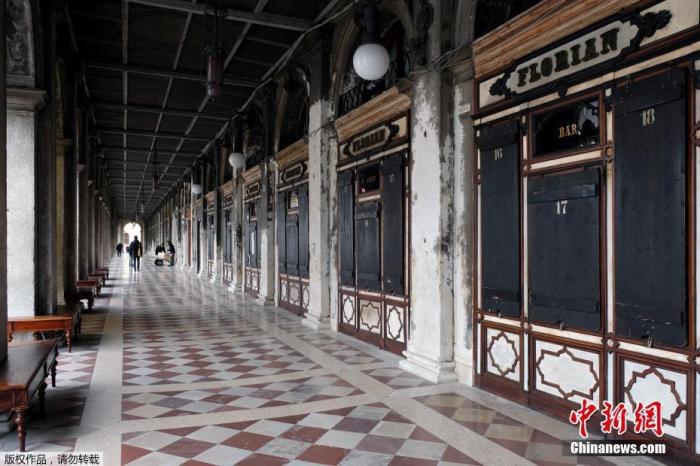Chinanews, October 22. According to Euronet, the Italian Ministry of Emergency Civil Defense issued an epidemic report on the 21st, stating that there were 15,199 new confirmed cases in the country, the cumulative number of confirmed cases increased to 449,648, and the cumulative number of deaths was 36,832. .
It is said that this is the first time since the outbreak of the new crown epidemic in Italy that more than 15,000 new cases have been confirmed in a single day.
According to reports, the Italian region of Lombardy reported 4,125 new confirmed cases on the 21st, setting a record for the region since the epidemic.
And in Rome in the Lazio region, the emergency center there reported on the 21st that from the 20th, the new crown hospital in Rome has begun to experience bed shortages.
The picture shows that there are few people on the streets of Venice, Italy.
D'Amato, director of the Public Health Committee of the Lazio Regional Council, said that the number of newly confirmed cases has continued to rise recently, again bringing unprecedented pressure to the regional medical and health system.
The government has begun to expand designated hospitals and will do everything in its power to ensure that all patients receive timely treatment.
Facing the severe epidemic situation, the Italian Minister of Health and the President of the Lombardy Region formally signed and issued a curfew on the 21st.
According to the law, from October 22 to November 13, a curfew will be implemented throughout the Lombardy region.
The president of the Campania Region, De Luca, stated that the Campania Region has imposed a curfew on October 23, and primary and secondary schools will continue to be closed until October 31, and that residents of the Region are prohibited from traveling across provinces.
If there are special circumstances, the public must truthfully fill in and carry the self-declaration.
In addition, the Valle d’Aosta Region held a government meeting on epidemic prevention and control on the 21st, inviting health and epidemic prevention experts to evaluate the regional and urban epidemics to decide whether to adopt more stringent epidemic prevention measures such as curfews and local blockades.
Cirio, chairman of the Piedmont region, proposed to the government to close all public places in the region, only allow food stores and pharmacies to continue to operate, and prohibit large and medium-sized shopping malls from opening on weekends.
In addition, other large regions and large and medium-sized cities including Rome, Florence, Bologna, Turin, Genoa, etc., are currently developing prevention and control measures such as restricting nightlife.
(Boyuan)

